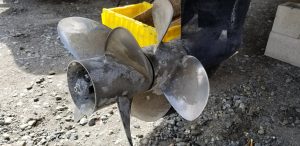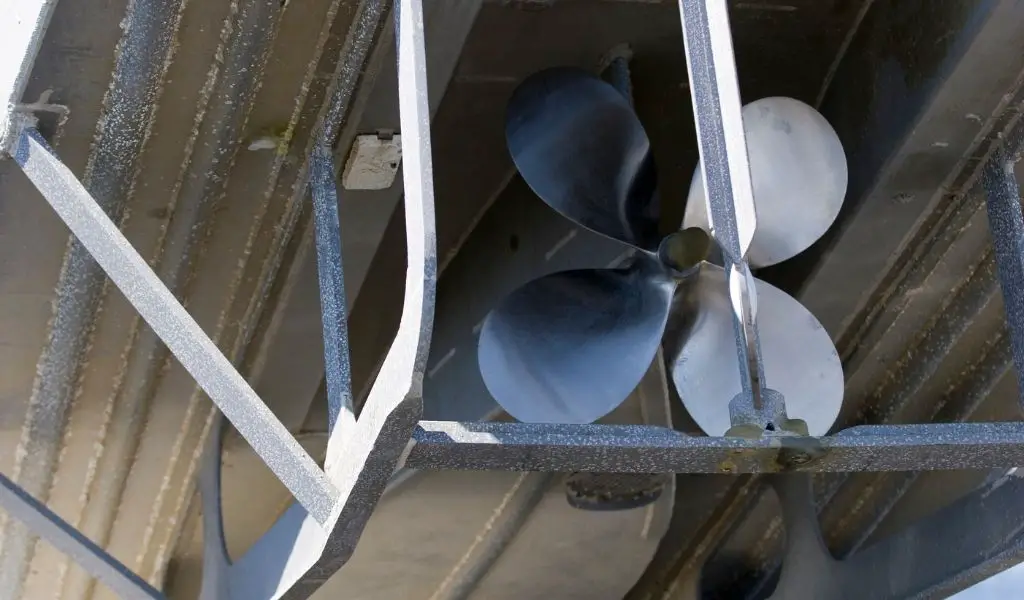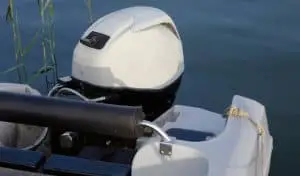Bright and shiny stainless steel fixtures on sail boats or power boats can really make a vessel pop if maintained properly.
Of course, boat owners have a more vested interest in caring for onboard stainless steel equipment, but boat charterers should also know how to maintain and care for stainless steel fixtures, particularly on voyages in a saltwater environment. Stainless steel requires constant, but, fortunately, simple care.
Here is a short and non-scientific discussion of stainless steel, along with some tips on caring for your equipment.
What is Stainless Steel and How Does it Work?
Stainless steel is a combination of metals that contains more than 10% chromium. Marine-grade stainless steel also contains amounts of molybdenum, nickel, and nitrogen. All four elements work together to make stainless steel the metal of choice in harsh marine environments, especially saltwater. Stainless steel resists corrosion, called pitting, maintains its strength at high temperatures, looks good, and is easily maintained.
However, while stainless steel is corrosion-resistant, it is not corrosion-proof. When exposed to harsh air and moist conditions, stainless steel can corrode or rust, which creates iron oxide. The chromium in stainless steel inhibits this process by producing its own oxide called chromium oxide, which resists further oxidation.
Types of Corrosion That Affect Stainless Steel on Boats
1. Atmospheric: Occurs when stainless steel is exposed to airborne liquids, solids, or gases, such as sea spray, rain, salt, or dirt.
This is the most common problem on my boat, especially if I miss a spot during rinse down. The best way to prevent this type of corrosion is to wash your boat after every use – and use a lot of water!
2. Chemical: Occurs when the steel comes in direct contact with high chloride or corrosive materials, like bleach.
If you don’t rinse your boat really well after cleaning, you can end up with chemical corrosion. Bleach is a great cleaner, especially for fabrics and cushions, but it also corrodes stainless. Pay attention to where you use it and make sure to rinse it with extra water.
3. Contact: Occurs when small pieces of carbon steel, scale, copper, or other foreign material become lodged in stainless steel, causing pitting.
This problem is caused by poor workmanship or wear when another type of metal comes into contact with your stainless steel hardware. You’ll see contact corrosion if you use a galvanized screw instead of a stainless one or attach a new brass or copper device to your stainless steel railing. If you can’t avoid using dissimilar metals, place a plastic or rubber insulator between them to prevent corrosion.
Tips for Caring for Stainless Steel on Boats

- To clean stainless steel fixtures, use a soft cloth or a non-abrasive sponge together with fresh water and a mild cleaner, like dish detergent. The same material can also remove pitting. Do not use steel wire brushes, sandpaper, or steel wool.
- Marine-grade stainless steel fixtures are vastly different from chrome-plated equipment. It pays to know what equipment on board is plated in order to maintain the equipment properly.
- Naval jelly (also known as phosphoric acid) is a mineral-based, inorganic compound that can be used as a rust inhibitor on stainless steel.
- Stainless steel is non-magnetic; applying a good magnet to onboard metals will help you determine the type of material.
- After each saltwater voyage, regardless of the length, a thorough hosing of the deck and all stainless steel fittings will dramatically reduce the potential for corrosion. Hose off with fresh water and some robust Norwegian steam (elbow grease to landlubbers).
- Regular cleaning and making immediate repairs to damaged stainless steel safety equipment are critical.
- A polish coating applied regularly adds protection and shine.
- Cleaning products containing chlorides or acids, especially bleach, should not be used.
- If warm water and mild detergent do not remove steel stains, a paste of baking soda and warm water works well. If the stain persists, add vinegar to the paste to boost its strength and add pressure while rubbing.
- A halo may form around a rust spot on stainless steel, which can indicate that a different type of steel (like steel wool or steel brush strands) are embedded in the surface. A paste solution of 10% nitric acid and 2% hydrofluoric acid (also called pickling paste) will remedy the situation. After applying the paste, rinse with a solution of baking soda and water, which allows the protective chromium oxide film to reform.
Watch this video to see how the professionals clean stainless steel.
What is Electrolysis?
The electrolysis phenomena is an electro-chemical process that occurs when two different metals come into contact with each other in a saltwater environment.
Cathodic protection is the most common technique used to prevent corrosion on dissimilar metals. In its simplest form, the technique involves attaching a sacrificial anode (a material with a more negative electrode potential, like zinc, aluminum, or magnesium), which takes the impact of the electrical charge.
Boat manufacturers go to great lengths to design and build vessels that minimize the use of dissimilar metals that are in contact with each other, but there are areas on a boat where the contact is unavoidable, like lower units.
Tips to Prevent Electrolysis
- Know the areas where different metals are in contact
- Take steps to ensure that cathodic protection material is in good shape
- Replace or repair when needed
Metals on Boats
The variety of materials used in boatbuilding, the fixtures, fittings, and other equipment on board all work together in harmony, for the most part. However, other areas where different metals are present can create some interesting situations.
For example, speakers in stereo and VHF marine radios contain magnets, which can affect the shipboard compass, as the compasses also contain magnets. Installing equipment with magnets in close proximity to the compass can generate headings that can be as much as five degrees, or more, in error. Similarly, cell phones and other electronic equipment can also affect compass headings and, to a degree, GPS devices.
Understanding the basics of metal properties, electrolysis, cathodic protection, and how marine electronics work will go a long way in helping to make your voyage trouble-free and safe.




